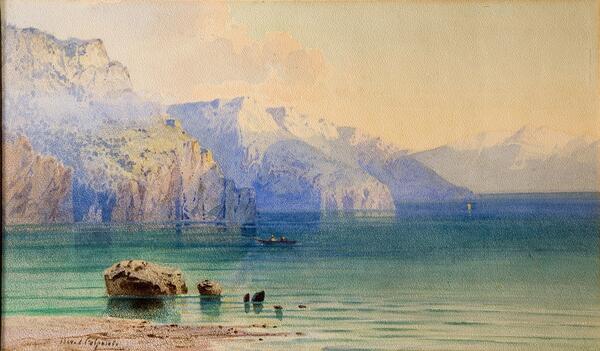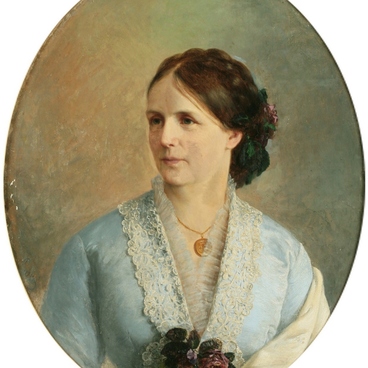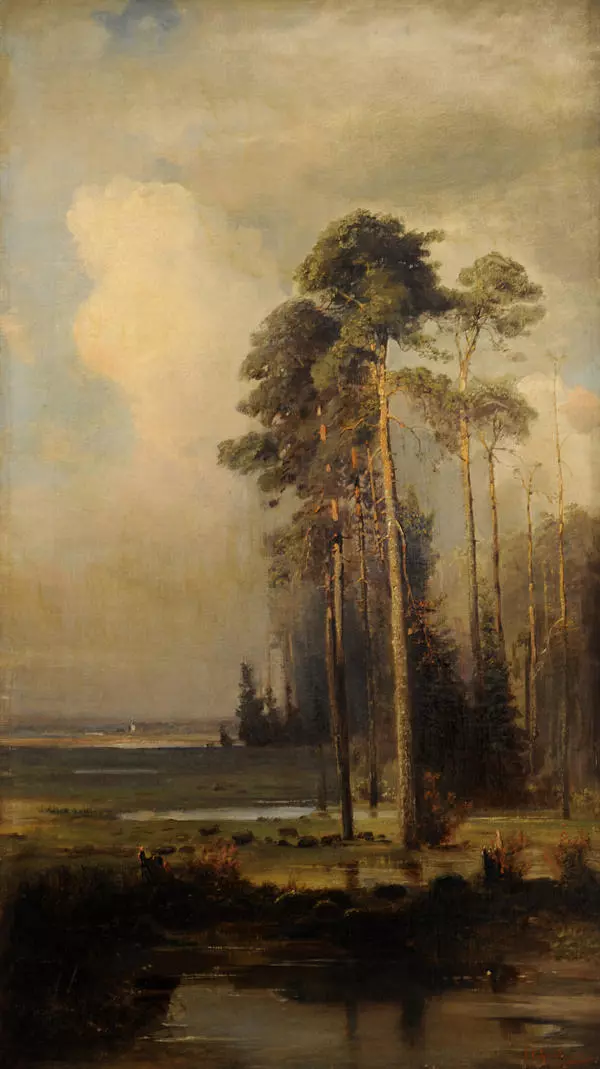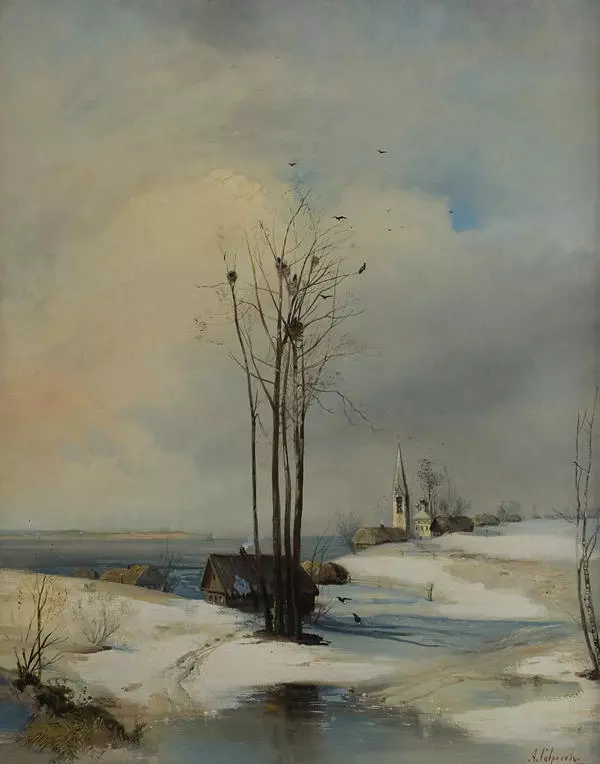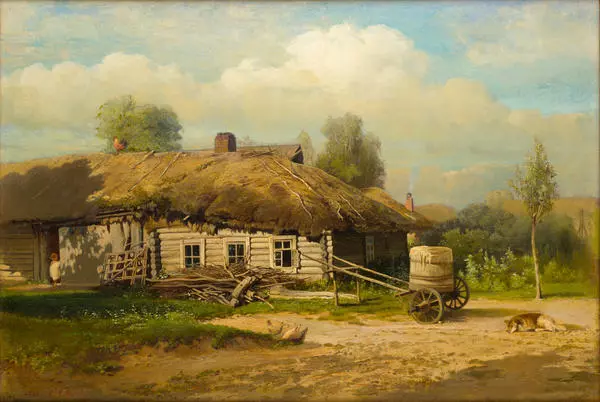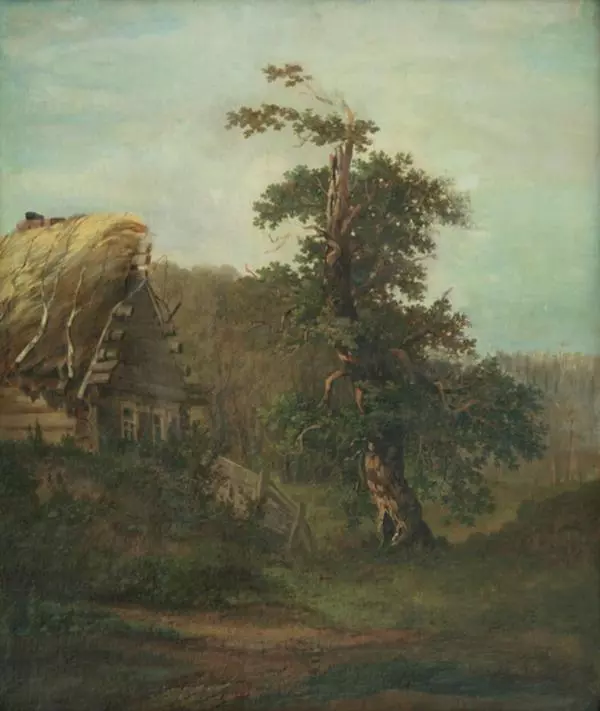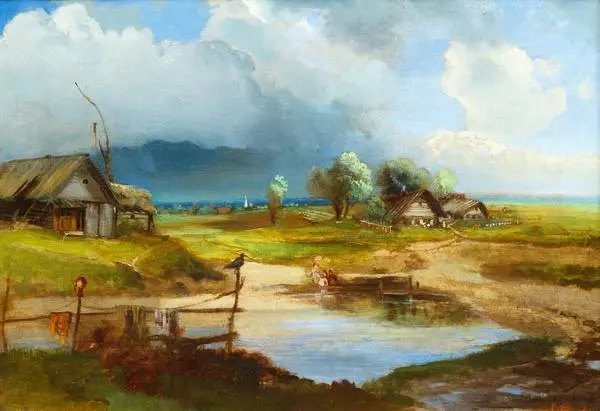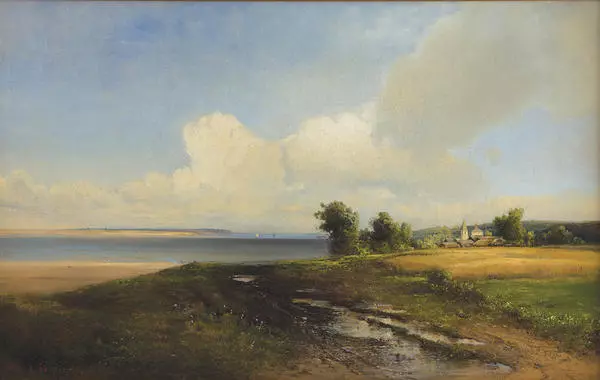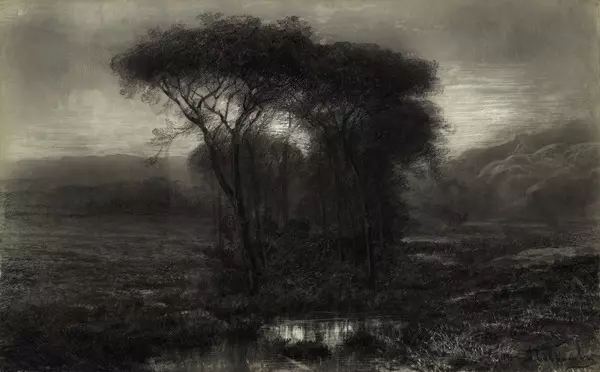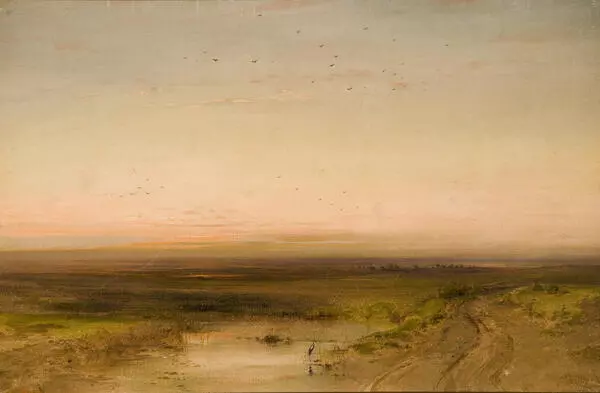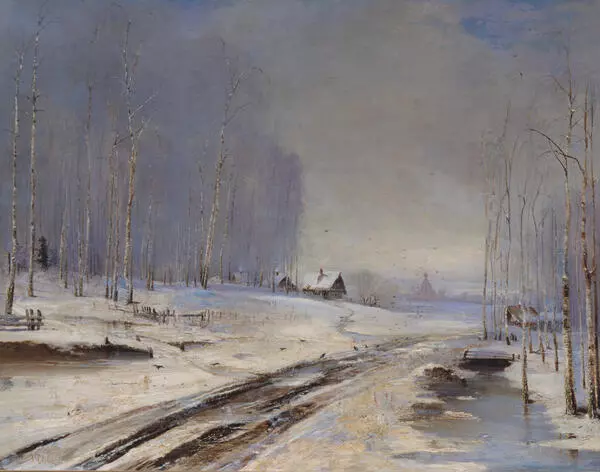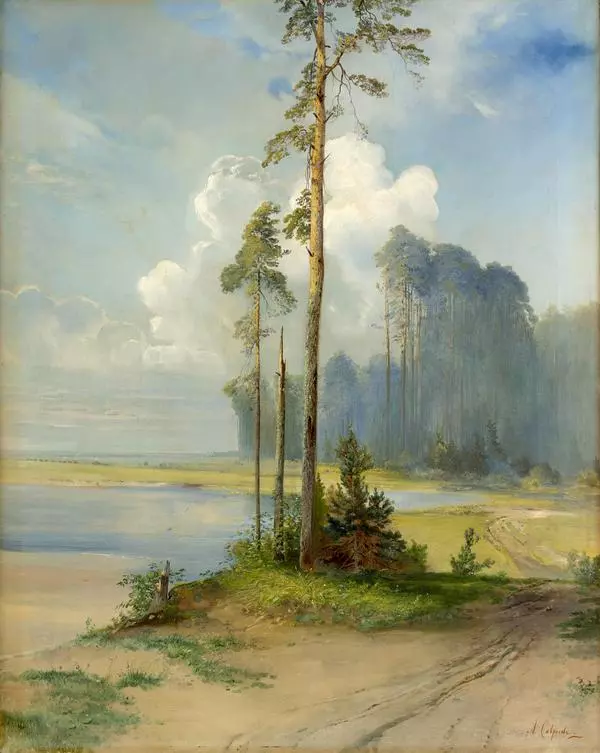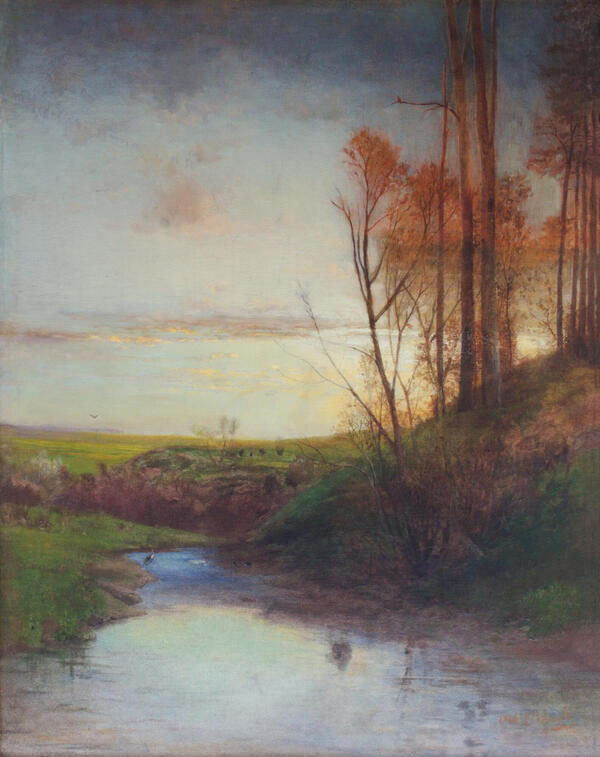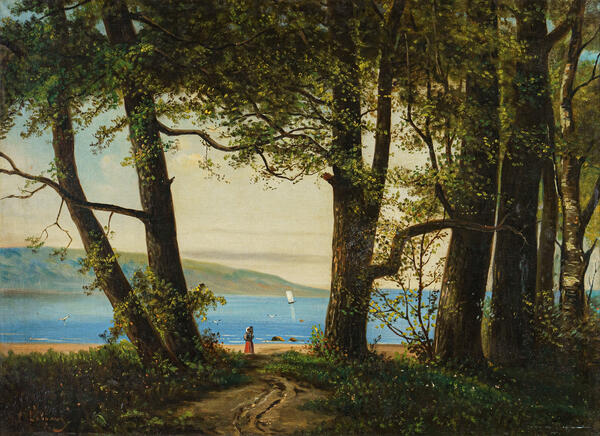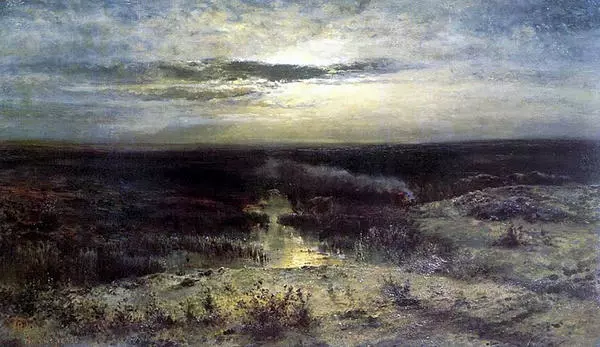The painting by Alexey Kondratyevich Savrasov (1830-1897) “Swiss Lake” (1864) entered the museum from the Karacharovsky estate of the Counts Uvarov in 1918. Alexey Savrasov is an outstanding Russian landscape painter, one of the originators of the democratic trend in Russian painting, a founding member of the Association of Wanderers. In 1850, he graduated from the Moscow School of Painting, Sculpture and Architecture. In 1854 he got the title of academician. In 1858 he headed the landscape class of the school. Savrasov’s name is widely known for the painting “The Rooks Have Come Back”, which has gained worldwide fame and is rightfully considered an example of the Russian realistic landscape. Throughout his work, the artist developed the theme of the search for beauty and poetry in an ordinary motif, which he inspired with his painting. The master was attracted by the unpretentiousness of the views of the Central Russia, it was in it that he found the desired ideal.
Savrasov’s disciple Isaac Levitan wrote about him: “In the simplest and most ordinary he was able to find those intimate, deeply touching, often sad features that in our native landscape have such an irresistible effect on the soul.” The features of Savrasov’s creativity are personal perception of nature, work with color and light, which allows conveying the unique state of nature, in particular, the special transparency of air and water. In the early 1860s, Savrasov visited European countries — England, France and Switzerland. The beautiful views of Switzerland evoked an emotional response in him and were “extremely interesting” for painting. According to the sketches made there in 1862-1868, the artist painted a number of pictures with views of Switzerland. Experts note that Savrasov’s European landscapes differ from the then fashionable images of majestic mountain landscapes “like Kalam’s” — the famous Swiss landscape painter of the XIX century. Savrasov’s writing style is characterized by authenticity, calmness and attentiveness to the state of nature.
His watercolor “Swiss Lake” is light and transparent. The author feels nature subtly. The lake depicted in the landscape attracts with its pristine pure beauty. The mountains reliably shelter the reservoir from the wind, so that the water surface is almost inviolable. There is a feeling that the landscape was painted in the early morning and conveys the concealment of nature just waking up, illuminated by the first rays of the sun. The painting is filled with air and seems to be almost weightless because of the bluish-green color. His landscapes, created in Switzerland, convey his attitude and tranquility. He displayed the beauties he saw there with his characteristic simplicity and spontaneity.
The extraordinary works of Alexei Savrasov attracted the interest of Grand Duchess Maria Nikolaevna, President of the Academy of Arts. She was the daughter of Emperor Nicholas I and the sister of Tsar Alexander II. The Grand Duchess acquired one of the artist’s paintings “Steppe with Chumaks in the Evening” for her personal collection. Alexey Kondratyevich Savrasov, well-known in the highest circles of society, was invited as a home teacher of painting for children of the Moscow nobility.
Savrasov’s disciple Isaac Levitan wrote about him: “In the simplest and most ordinary he was able to find those intimate, deeply touching, often sad features that in our native landscape have such an irresistible effect on the soul.” The features of Savrasov’s creativity are personal perception of nature, work with color and light, which allows conveying the unique state of nature, in particular, the special transparency of air and water. In the early 1860s, Savrasov visited European countries — England, France and Switzerland. The beautiful views of Switzerland evoked an emotional response in him and were “extremely interesting” for painting. According to the sketches made there in 1862-1868, the artist painted a number of pictures with views of Switzerland. Experts note that Savrasov’s European landscapes differ from the then fashionable images of majestic mountain landscapes “like Kalam’s” — the famous Swiss landscape painter of the XIX century. Savrasov’s writing style is characterized by authenticity, calmness and attentiveness to the state of nature.
His watercolor “Swiss Lake” is light and transparent. The author feels nature subtly. The lake depicted in the landscape attracts with its pristine pure beauty. The mountains reliably shelter the reservoir from the wind, so that the water surface is almost inviolable. There is a feeling that the landscape was painted in the early morning and conveys the concealment of nature just waking up, illuminated by the first rays of the sun. The painting is filled with air and seems to be almost weightless because of the bluish-green color. His landscapes, created in Switzerland, convey his attitude and tranquility. He displayed the beauties he saw there with his characteristic simplicity and spontaneity.
The extraordinary works of Alexei Savrasov attracted the interest of Grand Duchess Maria Nikolaevna, President of the Academy of Arts. She was the daughter of Emperor Nicholas I and the sister of Tsar Alexander II. The Grand Duchess acquired one of the artist’s paintings “Steppe with Chumaks in the Evening” for her personal collection. Alexey Kondratyevich Savrasov, well-known in the highest circles of society, was invited as a home teacher of painting for children of the Moscow nobility.

